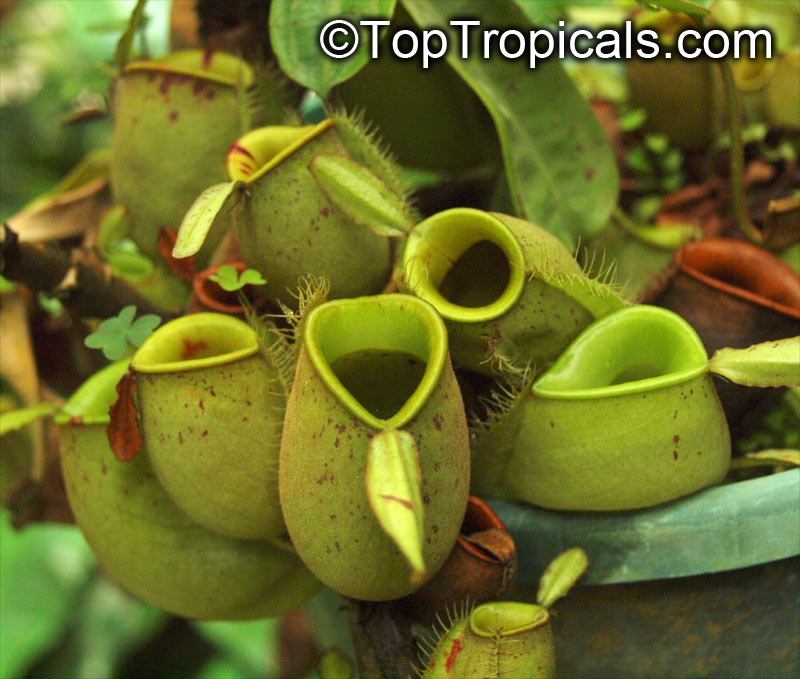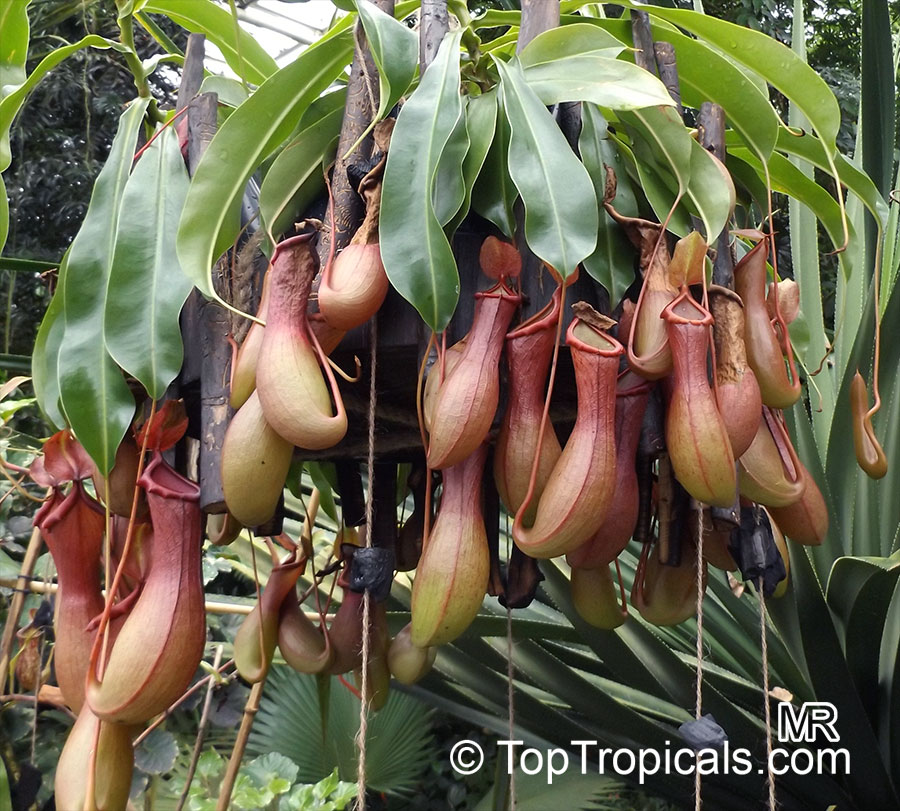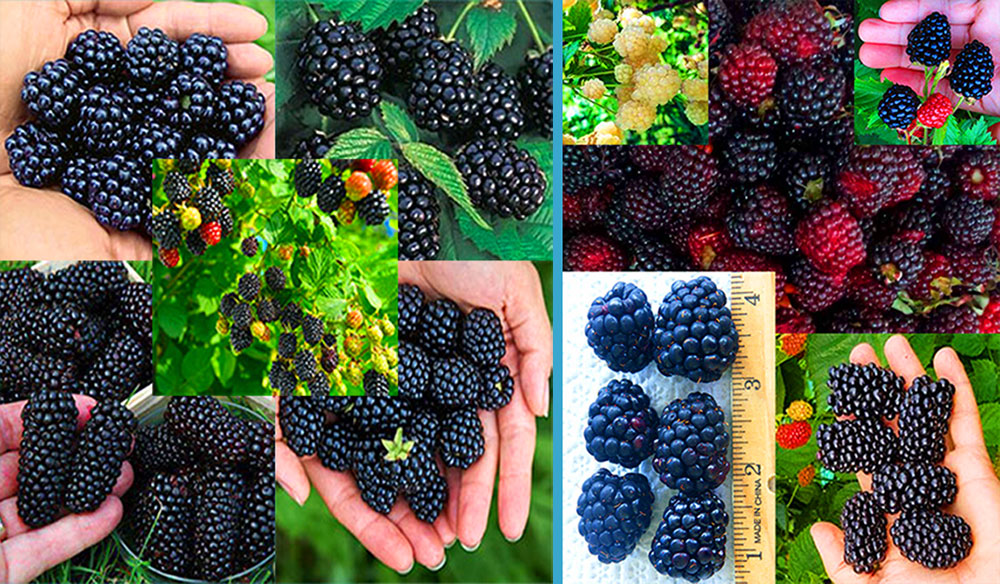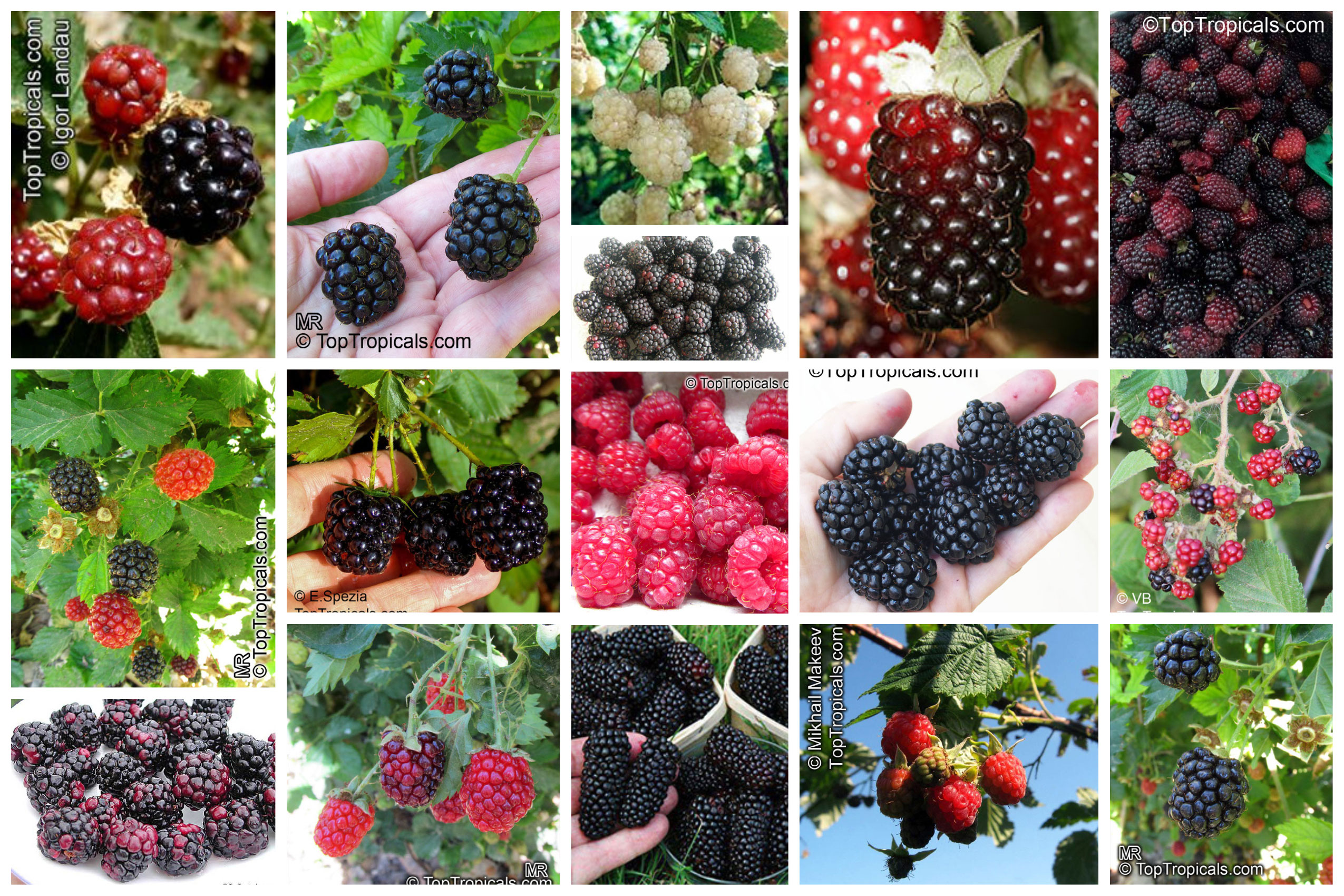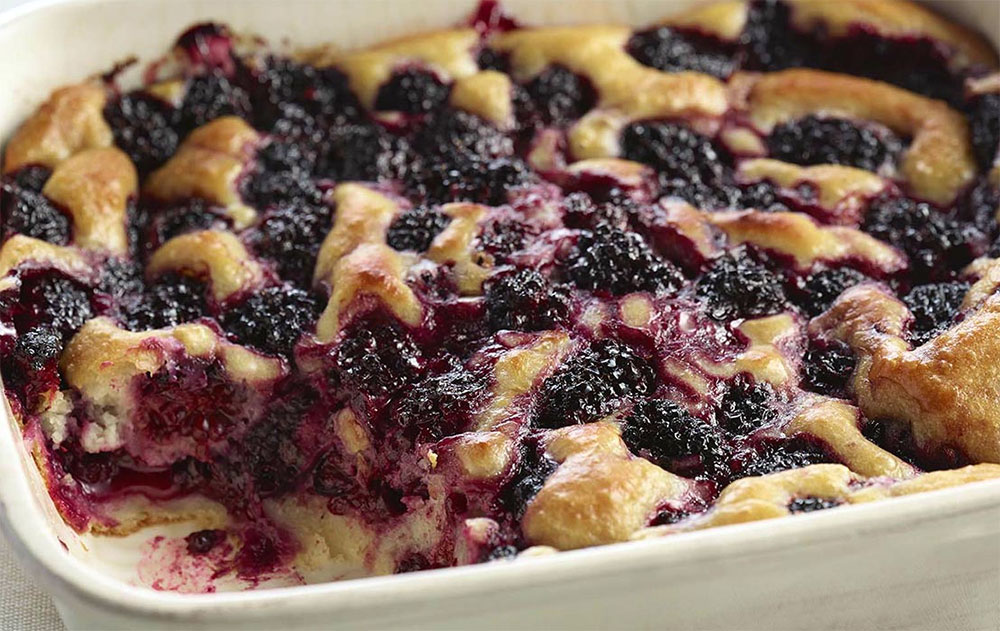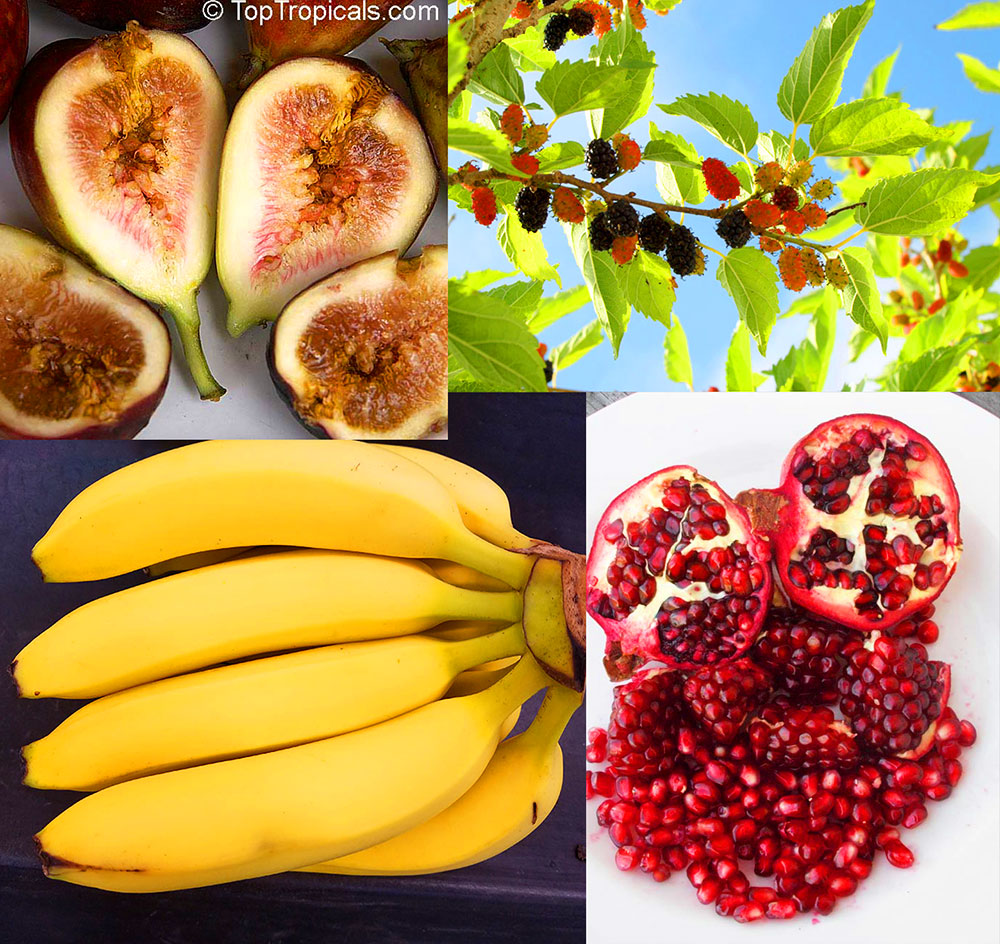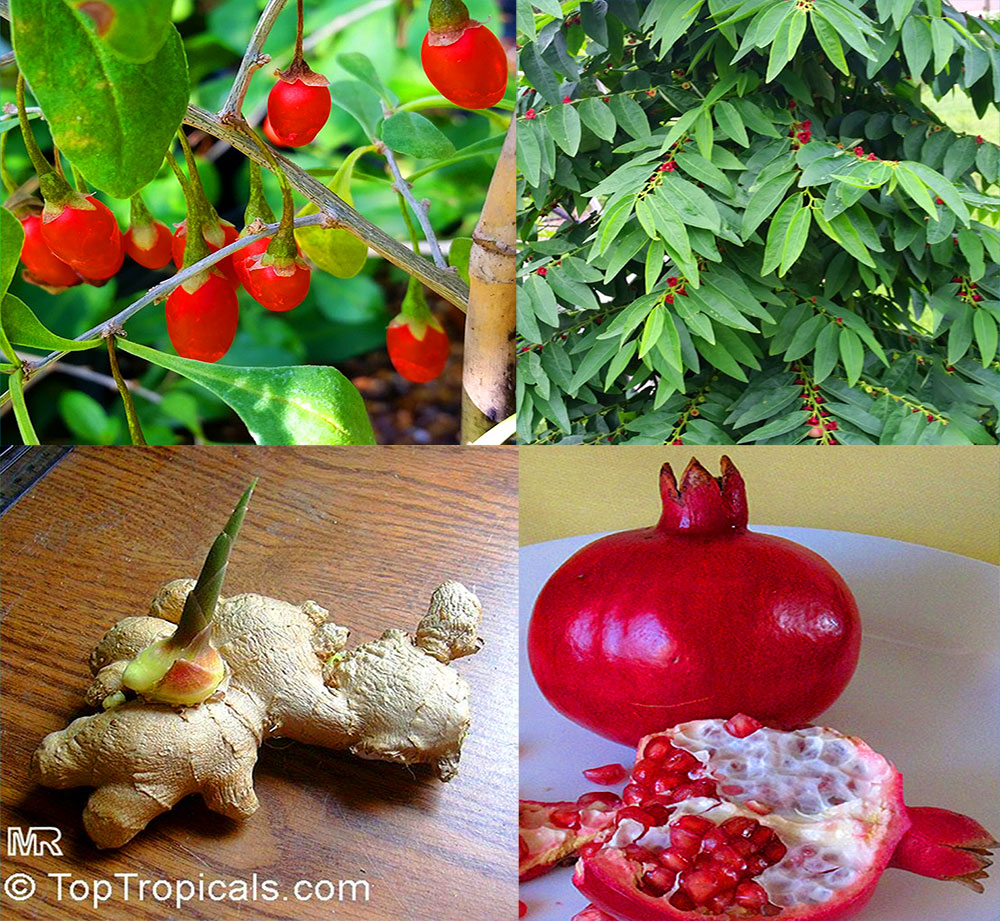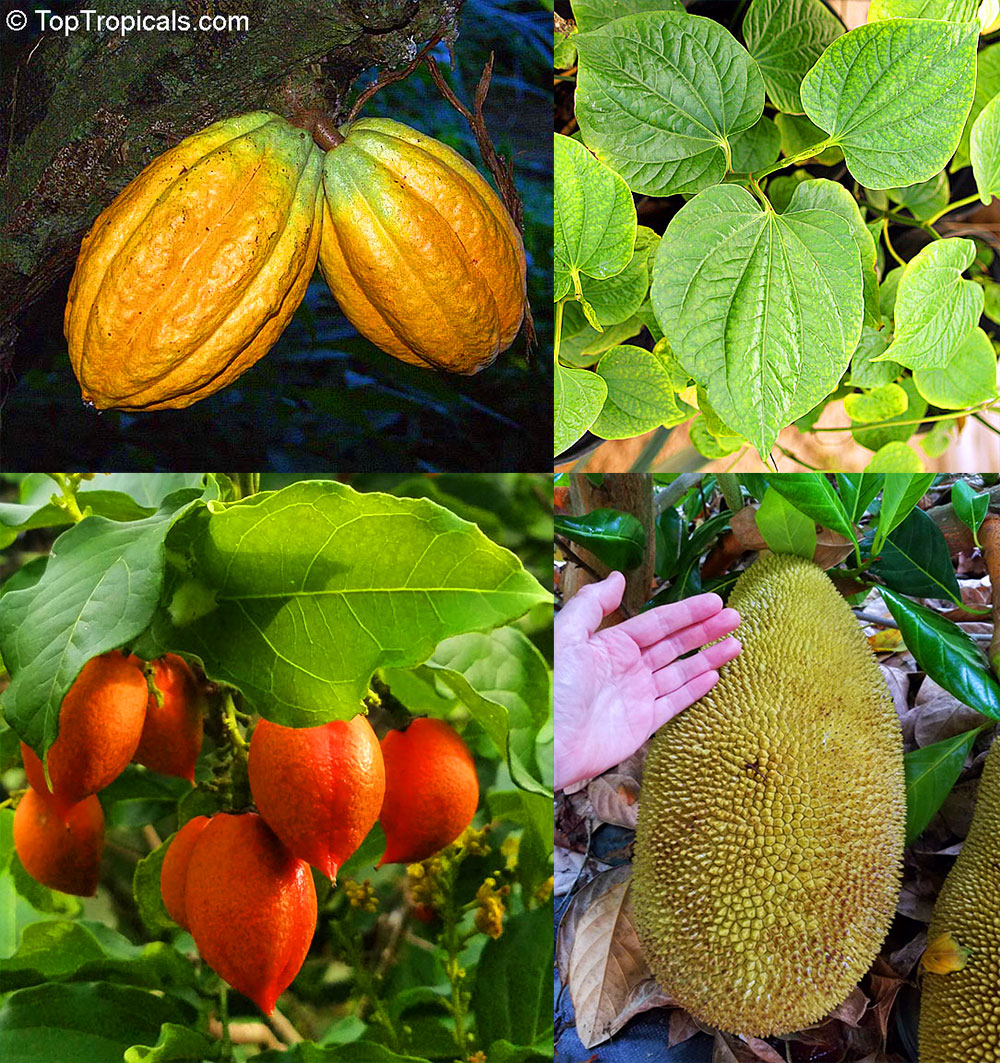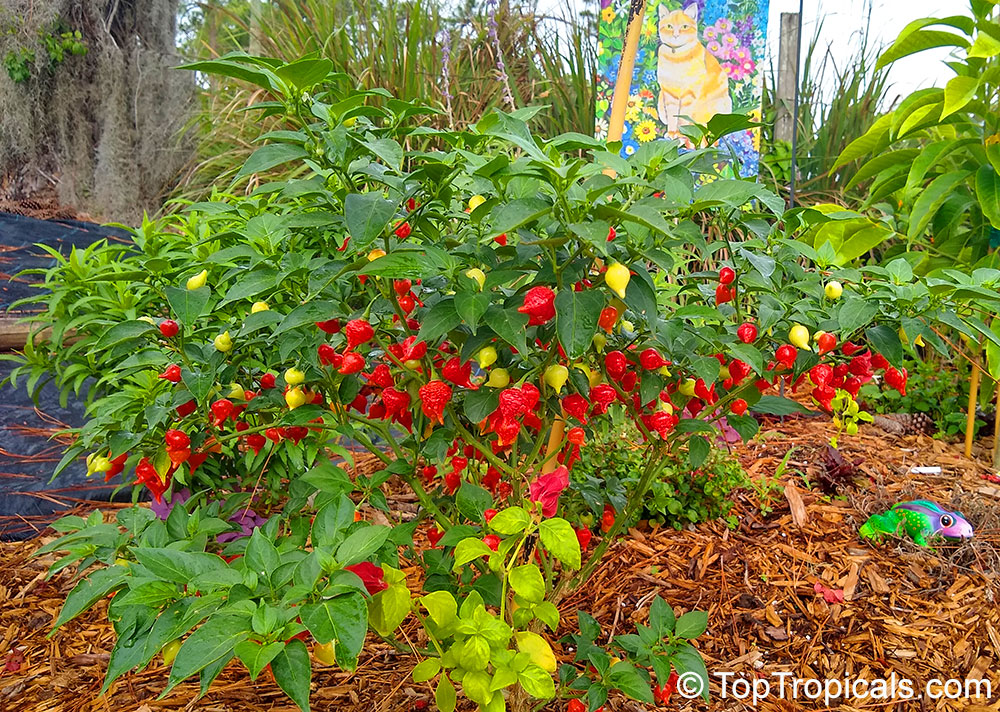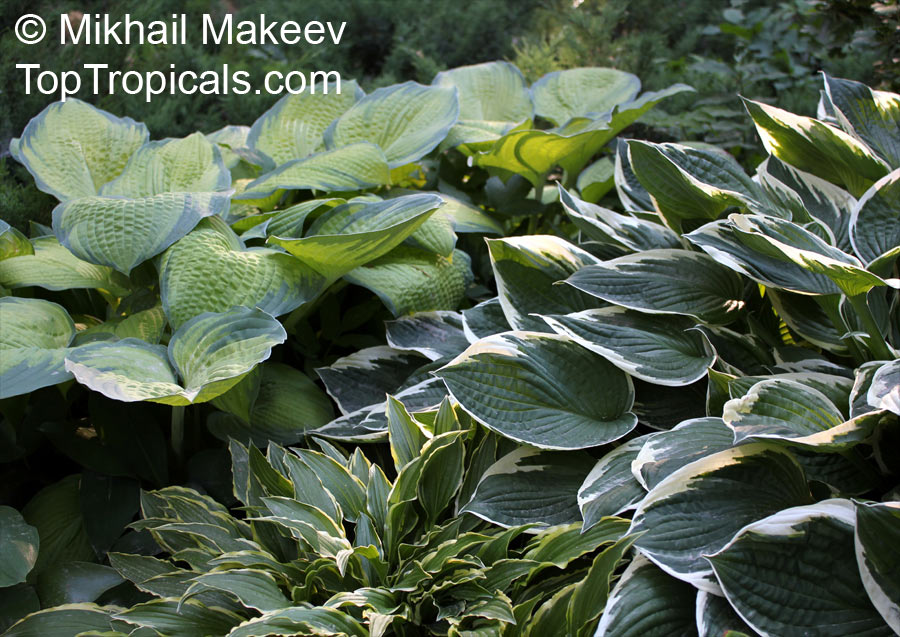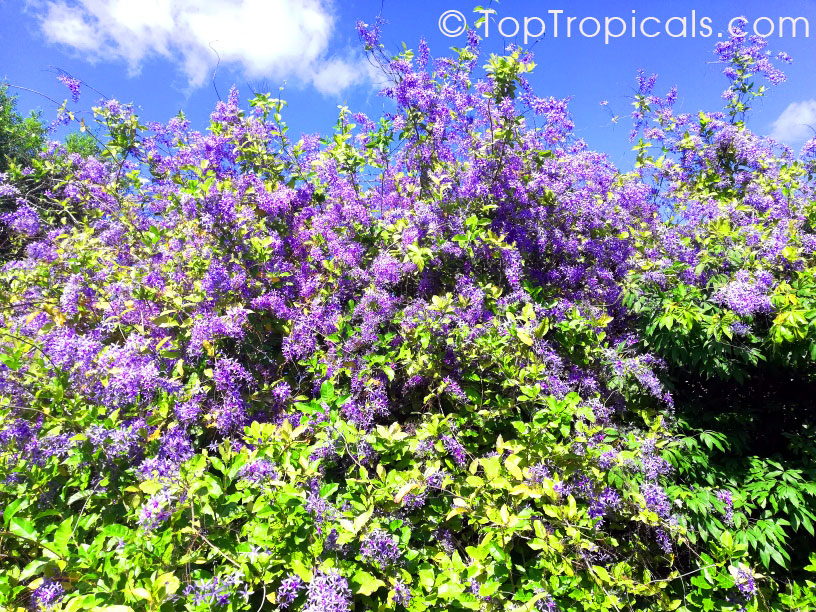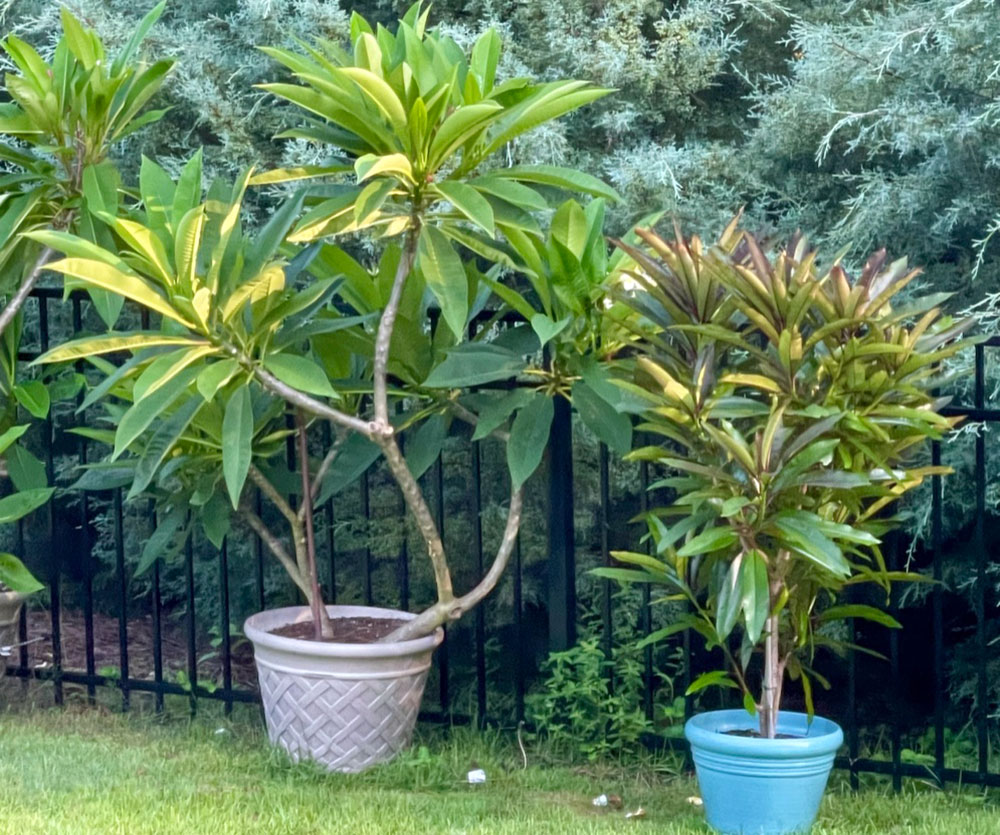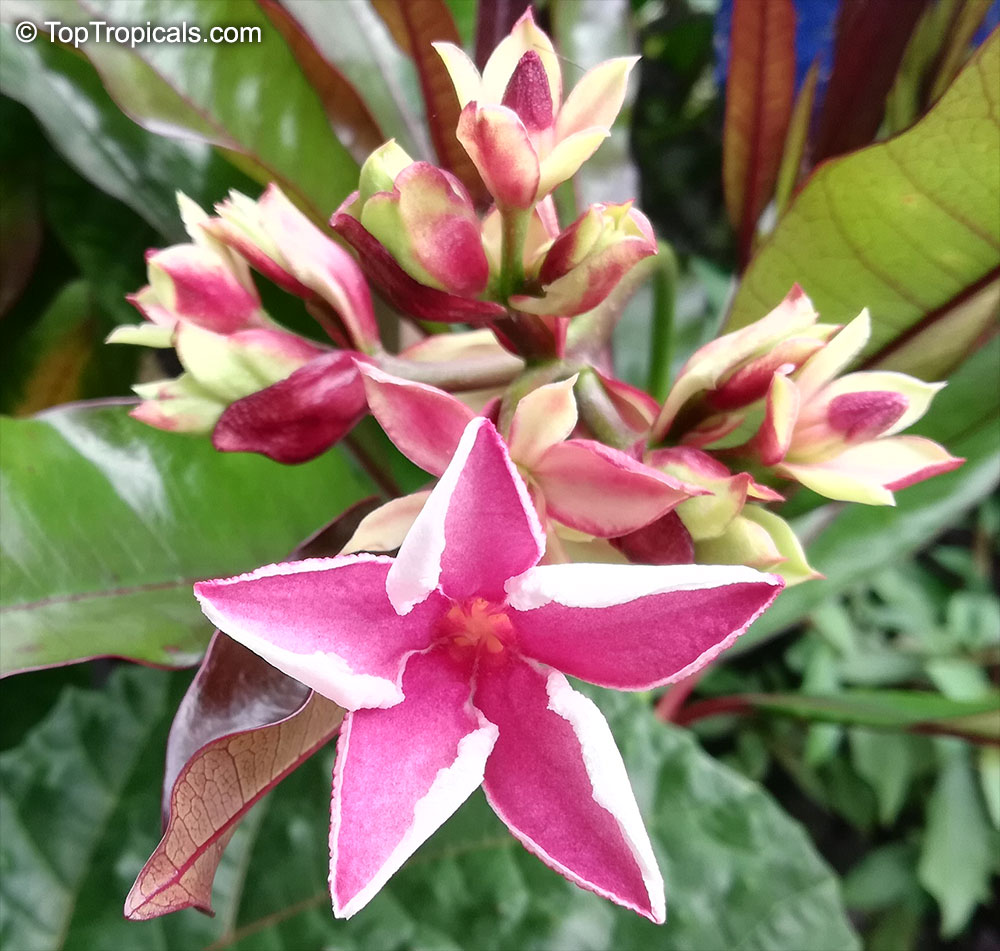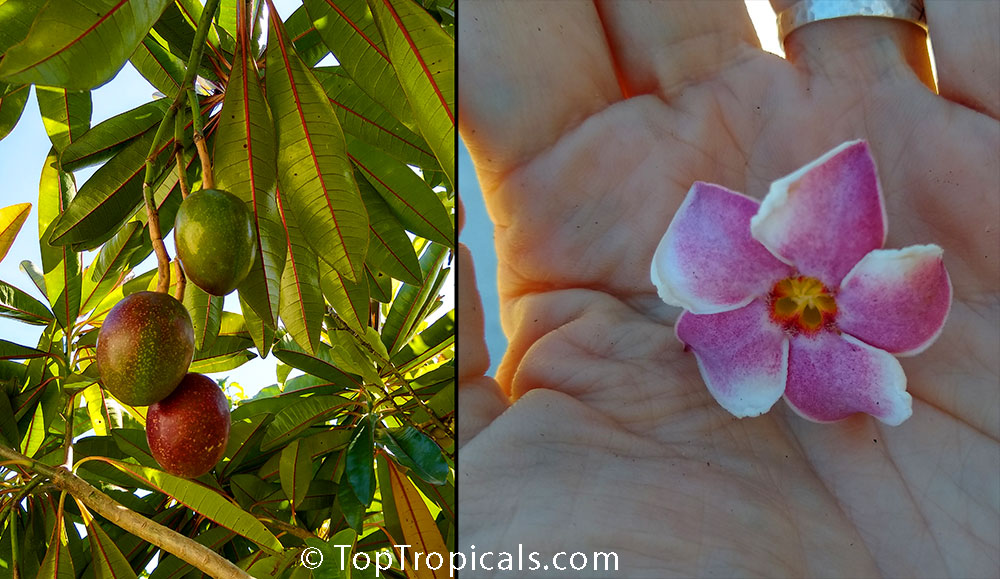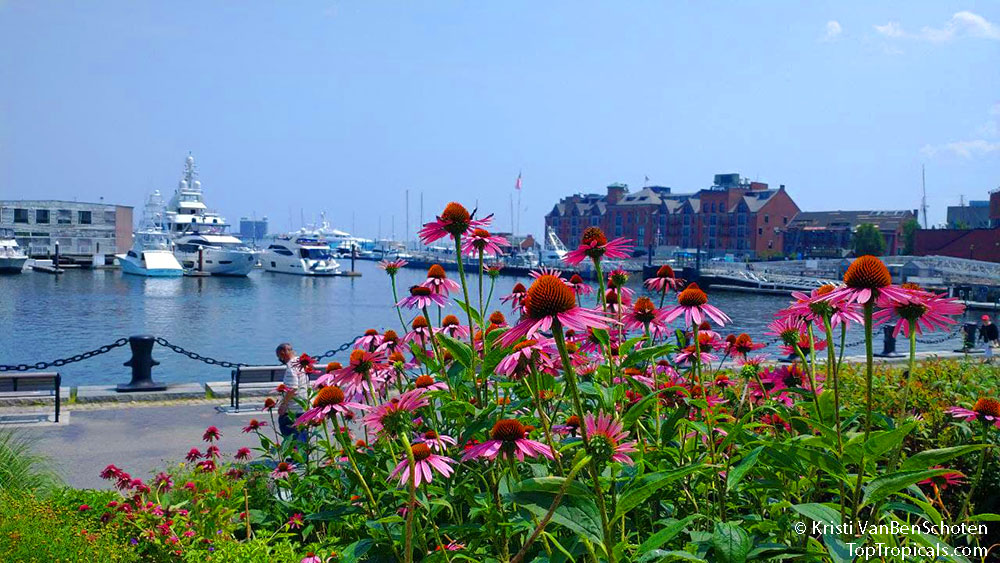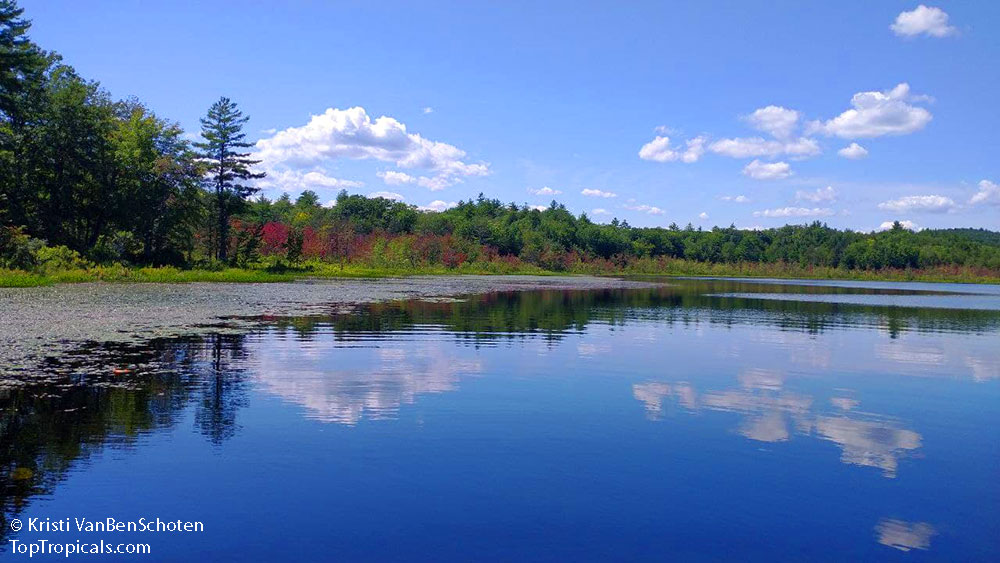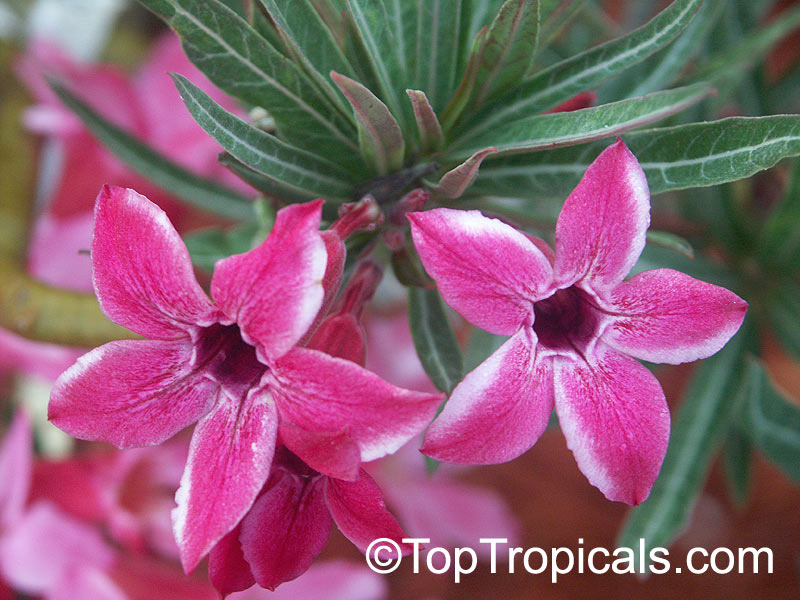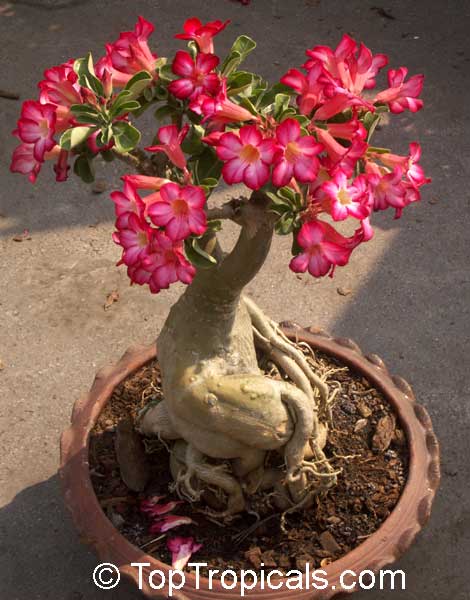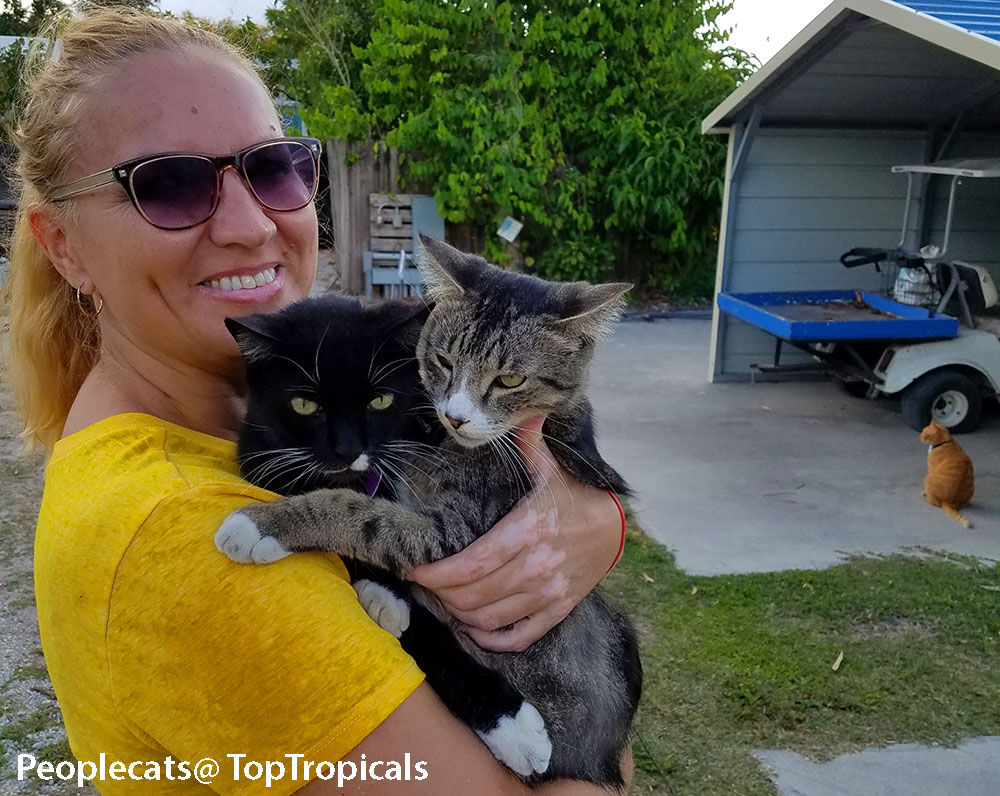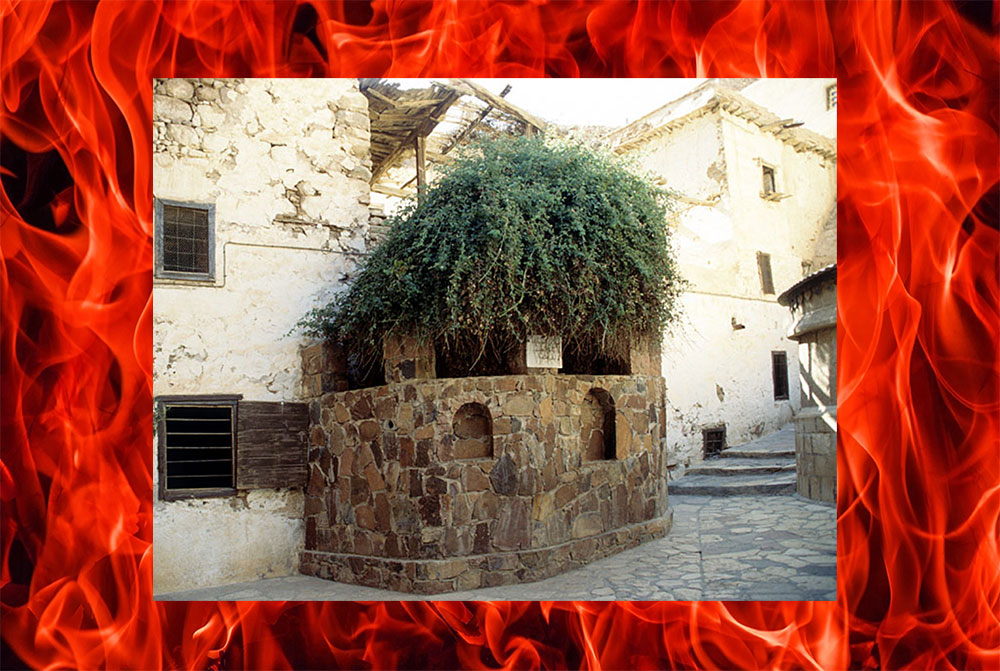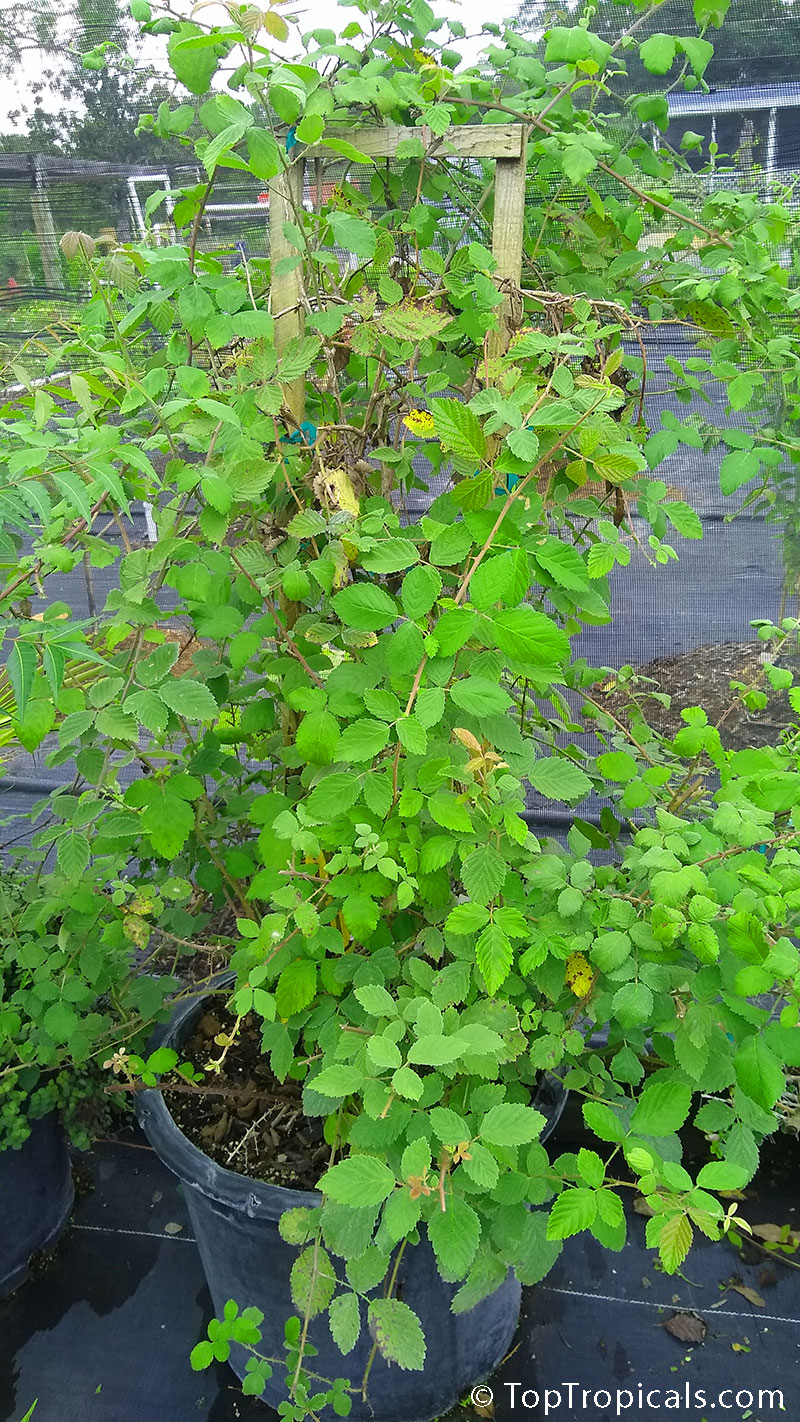Garden Blog - Top Tropicals
Date:
Nepenthes: Deadly Traps of Monkey Cups
by Alex Butova, the Witch of Herbs and Cats
...The name "monkey cups" refers to the fact that monkeys were once
thought to drink rainwater from the pitchers. This is false; monkeys do not drink
from them, and the pitchers are filled with digestive juices, rather than
rainwater. The trap contains a fluid of the plant's own production, which may
be watery or more viscous, and is used to drown the prey...
...The lower part of the trap contains glands which absorb nutrients from
captured prey. Along the upper inside part of the trap is a slick, waxy
coating which makes the escape of its prey nearly impossible...
...Prey usually consists of insects, but the largest Nepenthes species may
occasionally catch small vertebrates, such as rats and lizards. Records of
cultivated plants trapping small birds have been made!..
CONTINUE READING >>
Date:
Those mouthwatering Blackberries...
Blackberry Patch Bundle Exclusive Collection
Two Collections of Superior Blackberry Varieties, well adopted to tropical and subtropical climates. Mouth watering, all time favorite fruit will be always with you - these plants are so easy to grow!
Blackberry Patch Bundle Exclusive Collection - buy 3 get 2 free.
The Collection includes 5 blackberry varieties: Navaho, Osage, Ouachita,
Triple Crown Thornless, Iceberg White Blackberry.
Blackberry Patch Bundle Premier Collection - buy 3 get 2 free.
The Collection includes 5 blackberry varieties: Arapaho, Caddo, Kiowa,
Natchez, and Prime-Ark Freedom.
Mouth Watering High Protein Blackberry Cobbler
Ingredients
25g light butter
45g self-rising flour
33g vanilla whey
20g egg whites
50g almond or cashew milk
75g blackberries
Stevia/Splenda to taste
Instructions
Preheat oven to 350 degrees F. Melt butter half-way so it's just warm, not hot. In a mixing bowl, combine all ingredients except for blackberries. Pour into a 4-5" ramekin sprayed with Pam. Sprinkle blackberries on top of batter and bake for 15-20 minutes. It's best slightly gooey on the inside (not completely cooked). Enjoy!
Date:
Tropical Fruit Collections
September is a great month to plant. The soil is warm and the air is beginning to get cooler which helps to encourage new roots to grow. For much of the Country, September typically brings more opportunity for additional rain and moisture, allowing you to water less. Take advantage of this time of year to establish new plants in your gardens!
Tropical Fruit Starter Collection
Tropical Fruit Starter Collection - 4 plants for price of 2.
Tropical Fruit Starter set for half price! Rare tropical fruit trees that
are easy to grow even for beginners. Start today to get fruit of your labor
tomorrow! The Collection includes 1 of each: Fig, Banana, Mulberry, and
Pomegranate.
Ficus
carica - Fig Brown Turkey
Musa -
Banana Double Mahoi
Morus
sp. - Mulberry, Dwarf Everbearing
Punica
granatum - Pomegranate var. Eversweet
Super Foods Bundle
Super Foods Bundle Collection - 4 plants for price of 2
Super Foods Bundle for half price! Get health foods right from your
backyard. Start today to get healthy tomorrow! The Collection includes 1 of each:
Goji Berry, Spice Ginger, Pomegranate, Tropical Asparagus (Katuk).
Lycium
barbarum - Goji Berry
Zingiber officinale - Spice Ginger
Punica
granatum - Pomegranate var. Eversweet
Sauropus androgynus - Katuk, Tropical Asparagus
Rare Fruit Collection
Rare Fruit Collection - 4 rare plants for half price.
Rare Fruit Set for Real Collectors - for half price! Hard to find, much
wanted species all at once at low cost! Limited time offer. The
Collection includes 1 of each: Chocolate Tree, Vietnamese Pepper, Peanut Butter Tree,
Jackfruit.
Theobroma cacao - Chocolate tree
Piper
sarmentosum - Vietnamese Pepper, Lalot
Bunchosia argentea - Peanut Butter Tree
Artocarpus heterophyllus - Jackfruit Super Thai
Date:
How to fertilize herbs and vegetables
Q: We moved to Florida from New York earlier this year. My wife and I used to grow many fresh veggies and herbs in our garden up North during Summer, but it seems like in hot Florida the season for them is not until Fall. So we are preparing the beds and also looking for some organic fertilizer solutions. We've heard a lot about your natural Boosters and wonder if they can be used in our vegetable garden?
A: You came to the right place for organic fertilizer solution.
Sunshine Boosters are based on organic amino-acids and are completely natural,
non-toxic, eco-friendly, and do not build up nutrients in the soil. Their
mild formulas designed specifically for edibles.
We just have started our own vegetable garden with some Biquinho and Wiri Wiri peppers, cherry tomatoes, and basil, and will be adding more
as the the weather cools down.
For small scale gardens (both vegetables and herbs), you can start with Sunshine Robusta - a total feed "all on one". All necessary elements are provided in just one bottle, both macro- and micro-elements, it is a scientifically balanced formula. For larger gardens, especially if you have fertilizer injector system, we recommend
Sunshine Boosters Pro Series - this product is much more economical, and
you will need to mix only 3 solutions into your watering tank at the time of
watering.
For more information, please contact our Booster guy Ed Jones, he can help you with selection and dosage information. Sample Discount program
is available for samples of Sunshine Pro.
Date:
Tropical analogies of non-tropicals
By Kristi, the Florida girl...
...When I first started working at Top Tropicals eight years ago I knew nothing about plants. I didn't even know which ones I liked. Over the first few months I took in information on plants like I was a starving kitten who had just gotten its first meal in weeks...
...What I started to notice was that the plants I tended to gravitate to were more cold weather plants. Plants that couldn't be grown in the hot summers in Florida, and vines. Seemed like everything I set my sites on was a large vine or couldn't grow in the heat...
...Many of our local customers are from up North as well and are used to these colder weather plants too. This got me thinking, I wonder how many of these people are missing the plants they grew up knowing and loving. I know there are at least a few from the conversations I have had with some of you at the nursery. So, I decided to make a list of a few of the plants that will grow here that are similar but not the same and, in some instances, even better!..
CONTINUE READING >>
Date:
How to grow Cerbera and make it flower
Q: I purchased Cerbera manghas - Enchanted Incense a year ago. As you see from the photo, it's doing great however, no blooms. I fertilize properly and very often and use worm castings for micronutrients. Yes it's not "your" fertilizer, but my plumerias, that are also in pots they are over 5 feet tall and blooming like crazy. I don't see any inflows coming on the Cerbera at all and it is hot and humid here in North Carolina, so it's happy but no sign of blooming. What is your advice?
A: Top Tropicals first brought Cerbera manghas into the US plant market a few years ago, it was recommended to us by our friend, plant taxonomist John Mood who visited Thailand, and among other exotic plants noted this fragrant beauty. Since then we've been successfully growing this plant, it has become one of everybody's favorites.
Generally speaking, Cerbera culture is very similar to Plumerias. These plants are closely related. So if you know how to grow Plumeria, you sure will succeed with Cerbera. Hot and sunny location, well-drained mix, moderate water and bloom boom fertilizer will do the trick. However, we have noticed a few distinctive features that make this plant somewhat challenging at times.
1) Flowers
For past years, we've been studying what triggers its flowering.
Sometimes these plants start flowering in 1 gal pot, 1 ft tall. Other times a large
developed tree 5-6 ft tall, in 5-7 gal pot, grows beautiful foliage with no
signs of flowers. Eventually all of them bloom, no matter how stubborn they
are, it's just some individual plants start flowering sooner than others, all
grown in the same conditions.
One of our plants in the ground, a well-branched tree, was covered with
flowers for a few months, but only on the 3d year after planting. Before that,
it only produced a few random blooms. Others bloomed in pots at very young
age.
The following factors benefit to Cerbera flowering:
- full sun at least 10 hours a day
- hot temperatures above 85F
- regular water but not heavy rains
- regular fertilizer - Bloom Booster type
- very good drainage and drying out before waterings. If root ball stays
moist, the plant may look healthy but won't set flower buds. Keeping on a dry
side will encourage flowering. Very similar to Jasmines: they bloom like crazy
in April while it's hot and dry in Florida, but once our summer rainy season
starts, they reduce blooming.
We highly recommend using Sunshine Megaflor bloom booster or SUNSHINE Pikake in combination with micro-element supplements Sunshine Honey (B-Mo) and Sunshine Superfood (complex micro) that induce flowering. Dry and granulated fertilizers may not supply exactly what a plant needs: certain elements that trigger flowering may be missing. Sunshine Boosters formulas are scientifically balanced, they contain precise amounts of nutrients needed for setting flowers. Besides, excessive salts from regular dry fertilizers create nutrient lock up that may retard plant metabolism; with liquid amino-acid based Sunshine boosters, plants consume the whole menu of elements without building them up in the soil.
2) Fruit
Fruit of Cerbera are very pretty and cover the tree after profuse flowering. To inexperienced eye they may look very much like small mango or avocado fruit - so make sure kids or visitors don't try to eat them! Cerbera seeds are extremely poisonous.
3) Leaves
If you ever grew Passiflora or Milkweed, you know how leaves can be
eaten by caterpillars overnight. This may happen to Cerbera too, as we
discovered. In Florida environment this exotic plant doesn't have natural predators for
protection from certain insect species that may feed on it. So watch out and
if noticed first signs of leaves damage - its time for insect control.
Other than that, Cerbera foliage is usually beautiful and colorful, here in
Florida it looks much healthier than that of Plumerias often affected with
rusty residue during high humidity months.
Hope this helps. The Cerbera fragrance is enchanting, it is worth the efforts and waiting!
Date:
Plants and Trips...
Where are all the tropicals?
By Kristi, the Florida girl...
...Jamie and I recently took our first real vacation in four years! Yep, that's right, we packed our bags and loaded the Challenger for a two-day drive from Florida to New Hampshire. I know what you are asking "Are you crazy? That's a long drive!" Yes, yes, it is a long drive. One this Florida born and raised girl didn't realize would be as long as it was...
...As we got into the driving, the world as I knew it began to change. All of a sudden, the roads started twisting and turning. The streets were no longer palm tree lined but in their place were huge jetting rocks and cliffs. I was like a kid at Disney! I have never seen anything like this, there were Christmas trees growing out of the ground! Right up out of the ground!..
CONTINUE READING
Date:
Care of Desert Roses
Q: I am looking forward to my three desert roses I just ordered from you and I am wondering how to take care of them, especially during winter time. Should I put the pots in full sun or shade? What kind of soil do they like? How often should I water them? When it gets cooler, should I bring them inside? We do have occasional frost here during winter.
A: Here are a few tips for your desert roses:
1. When received Adenium from mail-order, unpack carefully; branches are fragile. Plant in well-drained potting mix. Cactus mix will do, but we recommend special Adenium mix. If using regular acidic peat-based potting mix, you may add sea-shells on top of soil to neutralize acidity: adeniums prefer alkaline soils. Using clay pots is beneficial. Water once and do not water again until soil gets dry. Place in bright shade until new leaves sprout, then the plant can be moved to full sun.
2. Adenium is a succulent, but not a cactus. It needs watering, however let soil dry before waterings. Reduce watering during cool season and discontinue when plant gets dormant (drops all leaves in winter).
3. Bright light is the best for profuse flowering. However, adeniums look much healthier in slightly filtered light rather than in all-day full sun.
4. Fertilize and spray leaves with liquid fertilizer SUNSHINE Megaflor - Nutrition Bloom Booster. Phosphorous is responsible both for flowering and caudex development. Avoid caudex, spray over foliage only. Dry fertilizer can be used only during hot months.
5. Watch for spider mites during hot and dry season.
6. Give plants a break during winter dormant season. Keep in bright shade and reduce watering to 1-2 per month or stop watering if temperature is below 65F.
More info on growing Desert Roses:
What you need for successful growing Adeniums
Overwintering Adeniums outside of tropics
Growing Exotic Adeniums - Growing Exotic Adeniums
Date:
August 8
International Cat Day
...August 8 is International Cat Day - a day to celebrate one of man's most common and ancient pets. They have even been worshiped as gods (we see you, Egypt.) Well, it is not surprising, Cats are one of the coolest beings on the planet: they are independent, inquisitive, adventurous, have an amazing physiognomy, and the power to heal by themselves... And - cats and plants always go together!..
...Nowadays, cats seem to be one of the pop icons in modern society - we have about half of a billion among us. And, since 2002, thanks to the International Fund for Animal Welfare cats have their own holiday!..
CONTINUE READING >>
Q: What do you call a huge pile of cats?
A: Take your pick - a Meowntain or a Purramid!
Date:
The secret of Burning Bush of the Bible...
and other Blackberries
by Alex Butova, the Witch of Herbs and Cats
...In the entire Old Testament nowhere does God reveal more about himself to one man than in the passage of the Burning Bush... And this exact bush exists! It can be found at the Chapel of the Burning Bush on Mount Sinai, where it is revered as the original Burning Bush of the Bible survived to nowadays. The species is very long lived so chances are, this is the exact plant that has been growing and regrowing from its roots throughout centuries...
...Rubus sanctus not only successfully survived to nowadays, but is used in Blackberry and Raspberry breeding programs. It has many descendants - hybrid varieties of berries so much loved by both kids and adults...
CONTINUE READING >>
Photo above: the original mother plant specimen of Rubus sanctus growing at Top Tropicals B-Farm. This plant was obtained from Israel in 2016 and gave life to many clones of so much wanted plant, for rare plant collectors worldwide.
